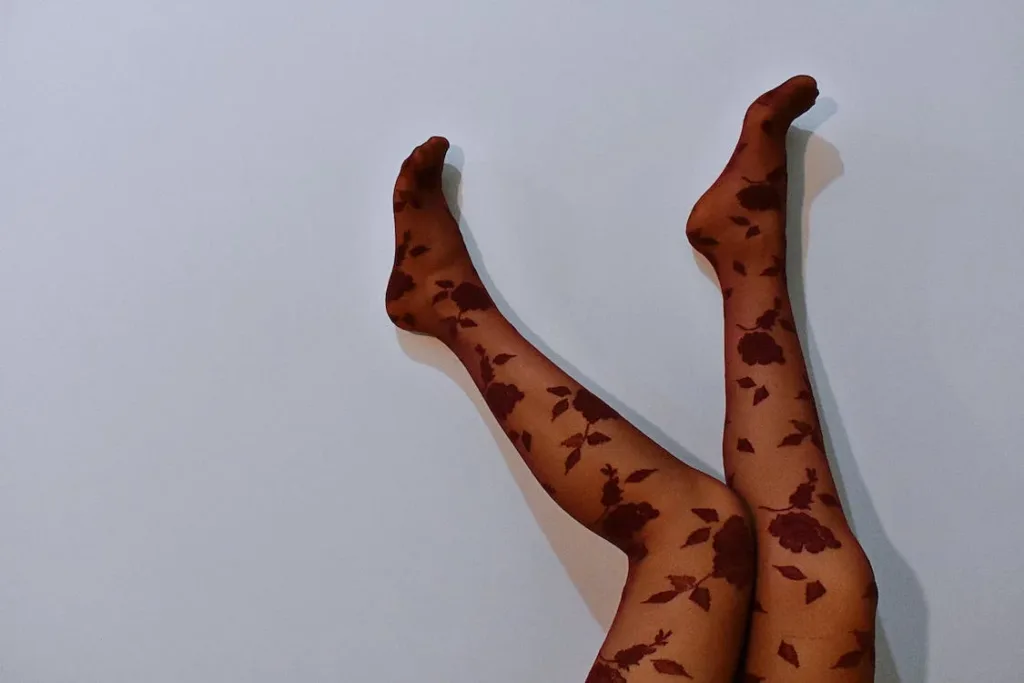Compression socks in Australia are increasingly being used for DVT prevention. Compression socks or stockings are preferred over blood thinners for preventing DVT in individuals who are at low risk of DVT because they are more comfortable and lack side effects.
Deep vein thrombosis, or DVT, is a life-threatening condition that affects millions of people worldwide.
DVT occurs when a blood clot forms in the deep veins of the legs. Many risk factors can lead to DVT, but one of the most proactive measures that can be taken is to wear compression socks.
From long flights and road trips to long commutes, people spend a lot of time sitting. This means that preventing DVT has become a top priority for many people.
This article will explore the growing importance of compression socks in protecting your vascular health, not just on long journeys but in your everyday life as well.
| Read: |
The Role of Compression Socks in DVT Prevention:

Compression socks are one of the most important pieces of clothing for preventing deep vein thrombosis.
They are carefully designed to apply graduated pressure to your legs, with the greatest pressure at the ankle and decreasing as you move up the leg.
This pressure distribution helps to promote healthy blood circulation and reduce the risk of blood clots forming.
The importance of compression socks in preventing DVT is undeniable. Long periods of inactivity, such as long flights by plane, car, or bus, can make you more susceptible to DVT.
So, compression socks have become a reliable ally for anyone who wants to protect their blood flow while on the go.
The concept behind compression socks is simple yet effective. When you gently squeeze your leg, it allows blood to flow back to your heart.
This prevents stasis and blood clots from forming. This mechanism is in line with the broader objectives of DVT prevention and makes compression socks a smart choice for those looking to reduce their risk.
However, patients at high risk of DVT may need oral anticoagulants for preventing and treating DVT.
Compression socks and anticoagulants (blood thinners) may be used simultaneously in high-risk individuals.
Here is a comparison of compression stockings and blood thinners in preventing DVT:
Aspect | Compression Stockings | Blood Thinners |
| Mechanism of Action | Improve blood flow | Inhibit clotting of blood directly |
| Effectiveness | Mild to Moderately Effective | Highly effective in preventing DVT |
| Usage | Used for DVT prevention in individuals at low risk for DVT. | Used for DVT prevention in patients at high risk of DVT, following surgery, or with certain medical conditions. |
| Comfort and Compliance | Well-tolerated, but some individuals find them uncomfortable or difficult to wear consistently. | Taken orally or via injections |
| Cost | Less expensive than blood thinners. | More expensive |
| Side Effects | Minimal side effects, such as skin irritation, discomfort, or difficulty putting on and taking off stockings. | Potential for bleeding complications, which can be severe in some cases. |
| Reversal Agent | Not applicable | Antidotes are available for some blood thinners and can be used to reverse their effects in emergencies. |
| Duration of Use | Recommended for use during periods of immobility or long flights. | May be prescribed for a specific duration or indefinitely, depending on the patient’s risk factors and condition. |
| Suitability | Suitable for individuals with low or moderate DVT risk or as an adjunct therapy for high-risk individuals. | More suitable for individuals at high risk of DVT or those who have already experienced a DVT or pulmonary embolism. |
| Monitoring | Limited need for ongoing monitoring. | Monitoring of INR is required for vitamin K antagonists but not for Rivaroxaban, Apixaban, or other newer agents. |
Understanding Deep Vein Thrombosis:

DVT (deep vein thrombosis) is a condition caused by long periods of inactivity. This can be caused by sitting for hours on a plane, on a long car ride, or even in a sedentary office setting.
In today’s world of travel and extended sitting, it’s important to understand the risks of DVT. DVT can come on quietly, with mild symptoms that are easy to ignore.
People who frequently fly long distances or spend hours in cars or at work desks are at risk of developing DVT.
The sneaky nature of DVT makes it so dangerous that many people don’t even know they’re at risk until it’s too late.
What makes DVT so dangerous is that it can lead to pulmonary embolism. A pulmonary embolism is a life-threatening condition where a blood clot moves to the lungs.
In addition to long periods of inactivity, other risk factors can lead to DVT, such as obesity, smoking, or certain medical conditions.
If you’re one of these, you’ll need to be extra careful. DVT is a silent killer, but you can protect yourself with knowledge and practical solutions.
With education and prevention, you can continue living your active and adventurous life without worrying about DVT’s consequences.
In the next sections, we’ll look at how compression socks can help prevent DVT, providing a practical and fashionable way to protect your vascular health during your travels and everyday activities.
| Read: |
The Importance of Early Detection and Prevention of DVT:
Early detection is one of the most important but difficult aspects of protecting your vascular health. DVT tends to operate silently, with symptoms not manifesting until years later.
The delay in symptom manifestation highlights the importance of early detection and the proactive measures you can take to reduce the risk.
In the early stages of DVT, there may not be any symptoms at all. However, as the condition progresses, you may experience leg pain and swelling, as well as warmth and redness.
These symptoms may not be exclusive to DVT and can be confused with other, less severe conditions. This diagnostic ambiguity is why early detection is so important.
Early detection of DVT in its early stages can make all the difference in terms of outcome and severity.
For those looking to protect their vascular health, prevention strategies such as wearing compression socks can help.
In a meta-analysis, GCS (graduated compression stockings) reduced the risk of DVT and pulmonary embolism by 60%.
People who are aware of the risks of DVT and take preventive measures are more likely to maintain their vascular health.
Early detection is still difficult, but by taking preventative measures such as compression socks, you can greatly reduce your chances of suffering the potentially life-altering effects of DVT.
| Read: |
How do Compression Socks work?

Compression socks help keep your blood flowing back to your heart by applying pressure to your legs over time.
This pressure starts at your ankle and goes down as you move your sock up your leg. It’s like a gentle massage that helps your blood flow up and back to your heart.
When you’re inactive for long periods, it can slow down the blood flow in your legs, which can make it more likely for clots to form.
That’s why compression socks work so well – they help reduce the risk of getting a DVT.
Not only do they address the symptoms, but they also help keep your legs in good shape by promoting regular blood flow.
So, if you’re doing anything that involves sitting or standing for long periods, like flying, driving, or working from home, you can wear compression socks to reduce the risk.
Plus, they’re discreet and comfy, and come in a variety of styles, so you can wear them without compromising your style.
| Read: |
Different Grades of Compression Stockings:
- Anti-Embolism (TED Stockings): 8 – 18mmHg
TED stockings are recommended after delivery or a surgical procedure to prevent clot formation.
- Class 1: 15mmHg to 21mmHg
These are best for individuals with a mild degree of vascular or lymphatic issues. They can be worn daily during working hours or even during yoga or exercise.
- Class 2: 20mmHg to 32mmHg
These are best for individuals with significant varicose veins or lymphedema. They can be used by patients who are hospitalized or are bed-bound.
In addition, they may be worn on a single leg if they are uncomfortable.
- Class 3: 30mmHg to 40mmHg
Class 3 socks are recommended for high-risk individuals and those with significant lymphedema. They must be worn when prescribed by a medical practitioner.
| Read: |
Ensuring Your Vascular Health:
Compression socks in Australia are becoming increasingly popular as a preventative measure against the risk of deep vein thrombosis (DVT).
These socks, which feature a graduated pressure design, are designed to improve blood circulation and can be a useful addition to daily routines, particularly when traveling or spending extended periods in a chair.
Therefore, when it comes to protecting one’s vascular health, wearing compression socks is a prudent and fashionable decision.



